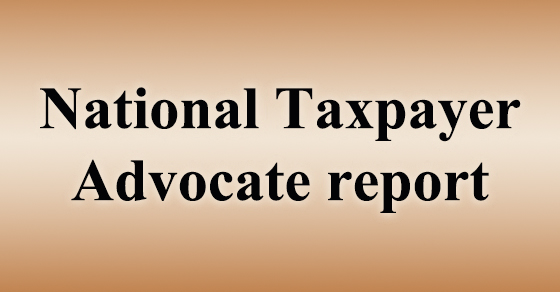Attention employers! A valuable credit, known as the employer credit for paid family and medical leave, will expire soon. It allows eligible employers to claim a general business credit on their 2018 and 2019 tax returns. The credit is based on wages paid in those years to “qualifying employees” on leave, subject to conditions. It’s … Read More
News
Close-up on pushdown accounting for M&As
Change-in-control events — like merger and acquisition (M&A) transactions — don’t happen every day. If you’re currently in the market to merge with or buy a business, you might not be aware of updated financial reporting guidance that took effect in November 2014. The changes provide greater flexibility to post-M&A accounting. Pushdown accounting is optional … Read More
National Taxpayer Advocate: Objectives Report to Congress
The National Taxpayer Advocate (NTA) has released volume 2 of its Fiscal Year 2020 Objectives Report to Congress. Volume 2 discusses the IRS’s responses to recommendations the NTA made in its December 2018 annual report. While the IRS agreed with many of the recommendations, it disagreed with others. For example, the NTA had found that … Read More
Flex plan: In an unpredictable estate planning environment, flexibility is key
The Tax Cuts and Jobs Act (TCJA) made only one change to the federal gift and estate tax regime, but it was a big one. It more than doubled the combined gift and estate tax exemption, as well as the generation-skipping transfer (GST) tax exemption. This change is only temporary, however. Unless Congress takes further … Read More
IRS: 1/31 Deadline for Employer Wage Statements & Independent Contractors
Employers and other businesses can get a jump on upcoming tasks, says the IRS. Jan. 31 is the filing deadline for employer wage statements and independent contractor forms. This allows the IRS time to verify income reported on individual tax returns and detect refund fraud. Here are some early-start tips from the IRS to help … Read More
NFP: Accounting for contributions and grants is now easier
Accounting for contributions and grants has often proven complicated for not-for-profits, especially when they come with donor-imposed conditions. But 2018 guidance from the Financial Accounting Standards Board (FASB) provided some much-needed clarification of earlier instructions. Provider factor Traditionally, nonprofits have taken varying approaches to characterizing grants and similar contracts as exchange transactions (also known as … Read More
IRS: Series EE U.S. Savings
Do you have Series EE U.S. savings bonds that were bought many years ago, and you now wonder how the interest on them is taxed? EE bonds don’t pay interest currently. Instead, the accrued interest is reflected in their redemption value. (However, owners can elect to have the interest taxed annually.) EE bond interest isn’t … Read More
IRS: Tax Gap
The U.S. “tax gap” is on a plateau. The gross tax gap is the difference between true tax liability for a given tax year and the amount that’s paid on time by taxpayers. The IRS has released tax gap estimates for tax years 2011, 2012 and 2013. The estimates show that the compliance rate is … Read More
Safe Harbor Rental Real Estate
A safe harbor for rental real estate to qualify for the qualified business income (QBI) deduction is now allowed. IRS Revenue Procedure 2019-38 permits a safe harbor allowing certain interests in rental real estate, including interests in mixed-use property, to be treated as a trade or business for purposes of the qualified business income deduction. … Read More
3 key traits of every successful salesperson
Take a mental snapshot of your sales staff. Do only a few of its members consistently bring in high volumes of good margin sales? An old rule of thumb says that about 20% of salespeople will make 80% of sales; in other words, everyone’s not going to be a superstar. However, you can create performance … Read More










